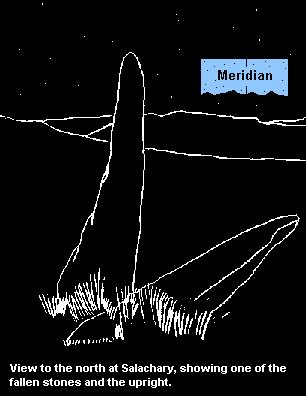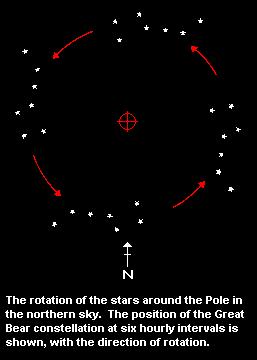
Salachary, Argyll
Stones of Wonder
QUICK LINKS ...
HOME PAGE
INTRODUCTION
WATCHING
THE SUN, MOON AND STARS
THE
MONUMENTS
THE
PEOPLE AND THE SKY
BACKGROUND
ARCHAEOASTRONOMY
USING
THE SITE DESCRIPTION PAGES
VISITING
THE SITES
THE
LEY LINE MYSTERY
THE
SITES
ARGYLL
AND ARRAN
MID
AND SOUTH SCOTLAND
NORTH
AND NORTH-EAST SCOTLAND
WESTERN
ISLES AND MULL
Data
DATES
OF EQUINOXES AND SOLSTICES, 1997 to 2030 AD
DATES
OF MIDSUMMER AND MIDWINTER FULL MOONS, 1997 to 2030 AD
POSTSCRIPT
Individual
Site References
Bibliography
Links
to other relevant pages
Contact
me at : rpollock456@gmail.com
Stone Alignment NM840040 | Location on map
How to find: This alignment is not marked on the Ordnance Survey map. Travelling north from Kilmartin on the A816, pass the Ford turnoff (B840) and a further 4.5km further on from there you reach the top of the Bealach Mor. Stop at the west edge of the conifer plantation (grid ref. 841045). A gate there leads to a track up the hillside, which you should follow for 0.5km. The stones are then to the east of the track, behind a slight rise on a level terrace.
Best time of year to visit: Midday or any clear night.

This alignment is beautifully situated and is well worth the effort of visiting despite its present sad condition.
It originally consisted of three upright stones in a line, of which two have fallen and one is still standing to a height of nearly 3 metres. From the way the fallen stones lie, it can be assumed that they originally stood in a north to south alignment.
Because the one remaining upright stone does not have flat faces, we cannot be sure of exactly the originally intended line, but it is clear that in both directions, north and south, the line was beyond the band of sky within which the sun or moon can rise or set.
To the south, an azimuth of about 179° with a horizon of nearly 2° gives a declination of about -32°. To the north, an azimuth of 359.4° with a horizon of under 2° gives a declination of + 35°. If we assume that the orientation is deliberate, it may be that the stones are an attempt to indicate the area of the sky which we know as the Pole, around which the stars appear to revolve. Sometimes, as in our era, there is a star close to or at the exact position of the pole ; in the 3rd millenium BC this was also true, as the star Alpha Draconis (also called Thuban) was in this position. However, having an unmoving star is not essential, as the phenomenon of the rotation of the heavens about one point is obvious even without it, as anyone who cares to watch the stars carefully on a clear night will know. (See drawing). Two constellations in particular, the Great Bear (two of whose stars are used as 'pointers' to the Pole) and the Little Bear (part of which contains the modern Pole star) are well known in this respect.
To the ancient Chinese, this motionless area of the sky around which all other objects revolved was the throne of a god, and when human emperors gave audience they also faced south, so that their subjects faced not only them, but also the god directly above.
The stones may equally have marked the south line, where the sun and moon attain in their highest positions in the sky.
The stones at Salachary may be an indication that such an area of sky, which appeared central to the natural world, was also of interest to the people of prehistoric Scotland.

A large photo of the Salachary alignment (88K) can be viewed here.